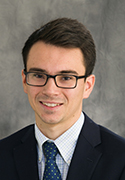Over the course of the semester, our trainees are reviewing webinars in their given fields and preparing abstracts to help colleagues outside their discipline make an informed choice about watching them. As our program bridges diverse disciplines, these abstracts are beneficial for our own group in helping one another gain key knowledge in each other’s fields. We are happy to share these here for anyone else who may find them helpful.
Decoding distinct attention and working memory states from human EEG
Part of Georgia Tech’s 2021-2022 Neuro Seminar Series
Edward Vogel, Professor of Psychology, University of Chicago
October 18, 2021
Watch on the Georgia Tech website >>
In this talk, Dr. Vogel introduces the idea of working memory, temporary task relevant information obtained from the environment that provides context on how to manipulate or act on the task, and the many frameworks used by scientists to interpret this type of memory. With the use of electroencephalogram (EEG) signals, Dr. Vogel discovered two signals part of working memory that are both similar and synchronous, but not synonymous. These signals are the contra-lateral delay activity (CDA) and lateral alpha power (LAP).
In this framework, CDA is an index of item representations and LAP is an index of covert spatial attention. Through the discovery of these two signals Vogel extends the working framework and looks at how distractions in tasks generating working memory affect both CDA and LAP as well as how the distraction can be incorporated into the active working memory. This systematic study and viewpoint really help to elucidate how humans encode working memory based on environmental cues.
Overall, I think Dr. Vogel does an excellent job at pointing out the advantages and limitations of the framework established by his lab as well as critically exploring his data to draw meaningful conclusions. His work of complexing the LAP to the CDA for working memory detection has really pushed the field in a new direction and has provided novel understanding of how working memory is both temporarily stored and activated in a general mechanism.
A question raised by the audience was how the type of distraction affects both CDA and LAP? As in, would a similar trend be expected for an auditory distraction compared to the spatial/visual distraction presented in the study? Given the tasks all had a spatial dependence, the answer to this question would give insights into if there is a more global trend in the mechanisms of encoding working memory. Furthermore, bridging his discovery with other types of working memory tasks could have been further discussed or explored.
By the end of the presentation, I feel as if the audience was given a nice toolset (whether that be experimental or just as a theoretical framework) to be able to incorporate into their working models to better understand the different working memory states.


